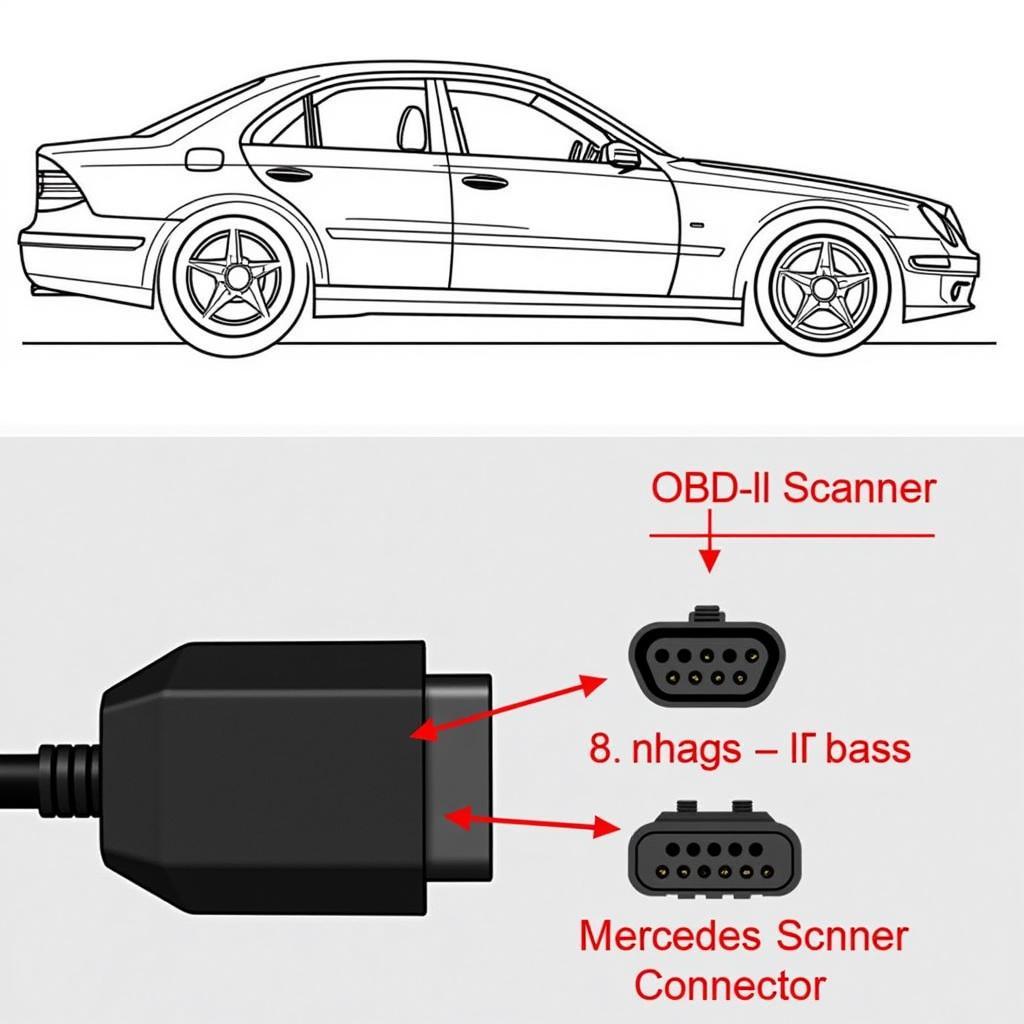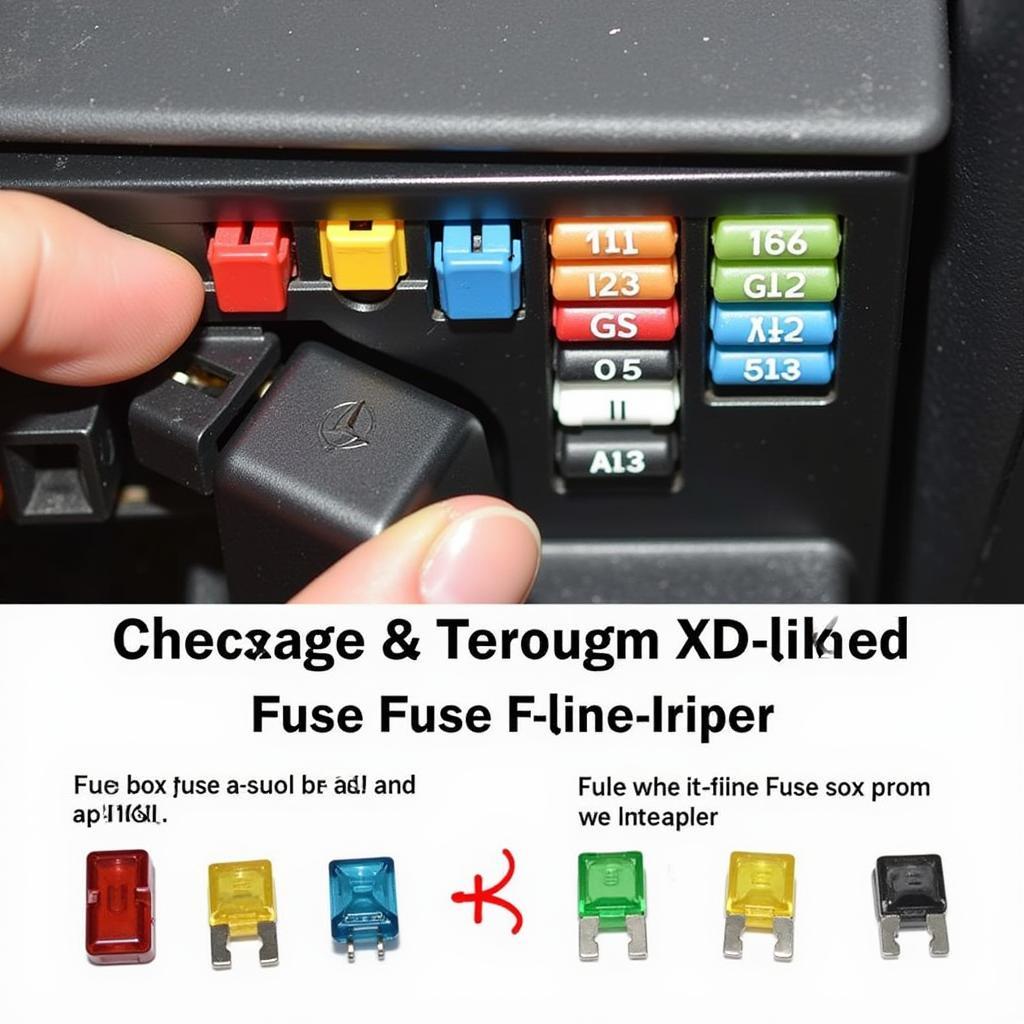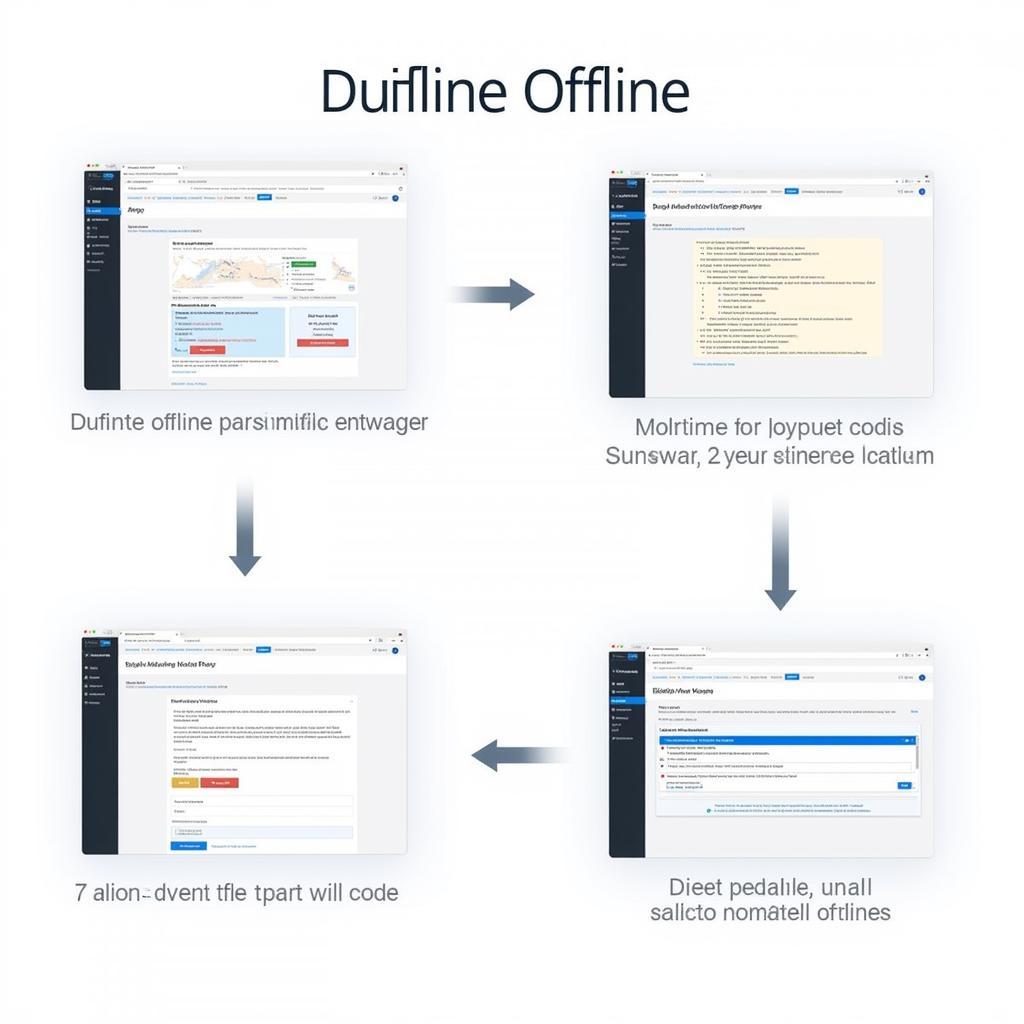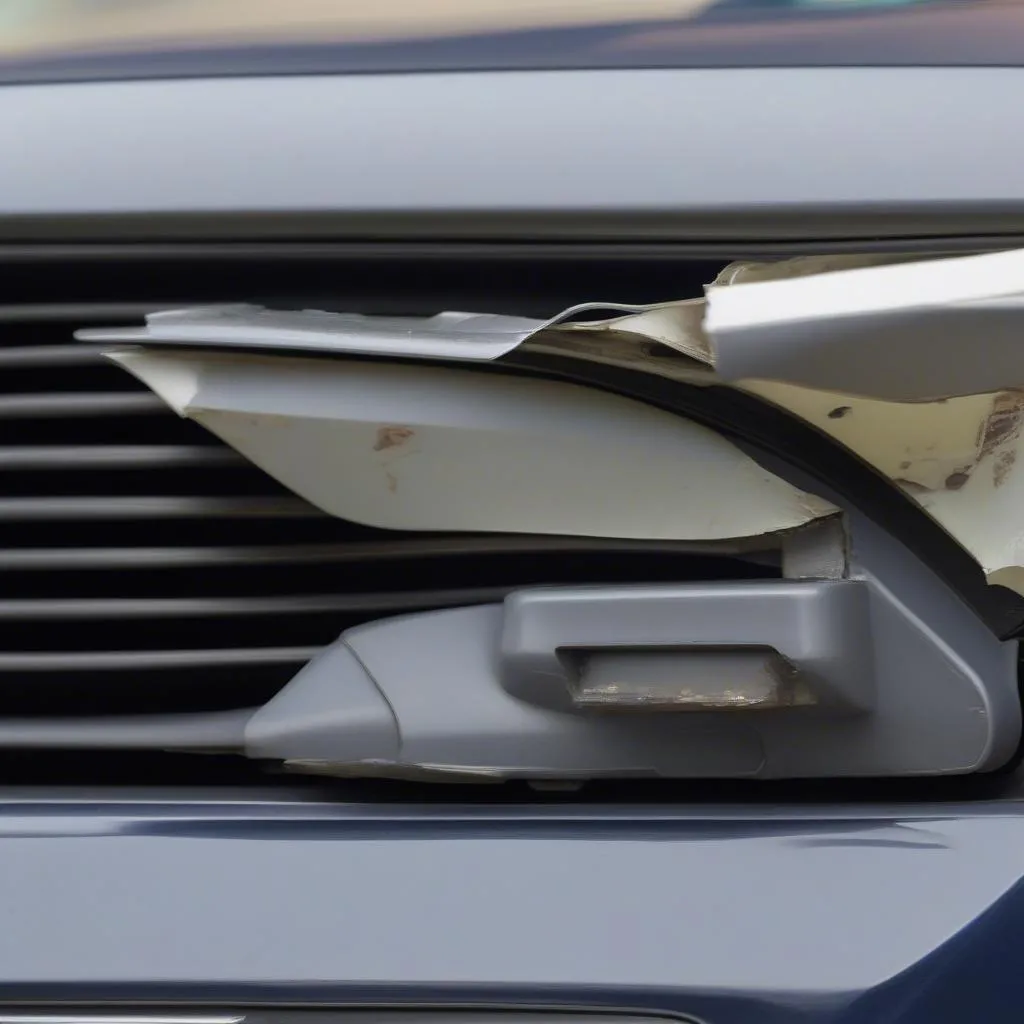Locating the diagnostic port on your Mercedes E Class is crucial for troubleshooting and maintenance. Whether you’re a DIY enthusiast or a professional technician, understanding its location and function can save you time and frustration. This guide will provide a detailed overview of the Mercedes E Class diagnostic port location, its purpose, and how to use it effectively.
For many Mercedes E Class owners, especially those who enjoy working on their cars, knowing the location of the 2001 Mercedes Benz diagnostic plug is essential. Accessing this port allows for quick diagnostics and simplifies many maintenance tasks. After this introductory section, we will delve deeper into the specifics of locating this vital component across different E Class model years.
Where is the OBD-II port on a Mercedes E-Class? Generally, for model years 1996 and newer, the OBD-II port is located under the dashboard on the driver’s side, near the steering column. For older models (pre-1996), a 38-pin diagnostic connector is typically located under the hood.
Pinpointing the OBD-II Port in Your Mercedes E Class
The OBD-II (On-Board Diagnostics, Second Generation) port is a standardized 16-pin connector found in most vehicles manufactured after 1996, including the Mercedes E Class. This port provides access to the vehicle’s onboard computer and allows you to retrieve diagnostic trouble codes (DTCs), monitor sensor data, and perform various tests.
Why is Knowing the Diagnostic Port Location Important?
Knowing the mercedes e class diagnostic port location is essential for several reasons:
- Troubleshooting: When your E Class encounters an issue, retrieving DTCs from the OBD-II port can help pinpoint the source of the problem.
- Maintenance: Regularly checking the data from the OBD-II port allows you to monitor the health of your vehicle’s systems and identify potential issues before they become major problems.
- Programming and Coding: The OBD-II port is also used for programming and coding various modules in your E Class, such as the engine control unit (ECU) and transmission control module (TCM). 2001 mercedes benz diagnostic plug can be crucial for certain maintenance and repair procedures.
Where to Find the OBD-II Port in Different E Class Generations
The exact location of the OBD-II port may vary slightly depending on the model year of your E Class. However, it’s generally found in one of the following locations:
- Under the Dashboard (Driver’s Side): This is the most common location for the OBD-II port in modern E Class models. Look beneath the dashboard, near the steering column or the fuse box.
- Under the Ashtray: In some E Class models, the OBD-II port might be hidden behind a removable panel or under the ashtray.
- Center Console: Less commonly, the port may be located inside the center console, usually near the front.
Using the Diagnostic Port Effectively
Once you’ve located the mercedes e class diagnostic port location, you can use an OBD-II scanner or code reader to access the vehicle’s data.
What is an OBD-II Scanner?
An OBD-II scanner is a diagnostic tool that connects to the OBD-II port and allows you to retrieve and clear DTCs, view live sensor data, and perform various tests. Some advanced scanners also offer programming and coding capabilities. Mercedes Sprinter diagnostic plug location information can be helpful if you also work on these types of vehicles.
How to Use an OBD-II Scanner
- Locate the OBD-II port in your E Class.
- Plug the OBD-II scanner into the port.
- Turn the ignition on (but do not start the engine).
- Follow the instructions on the scanner to retrieve DTCs or access other data.
 Connecting OBD2 Scanner to Mercedes E Class
Connecting OBD2 Scanner to Mercedes E Class
For owners of older Mercedes vehicles, understanding the 2001 Mercedes Benz diagnostic plug can be extremely valuable. These older systems, while different from the OBD-II standard, still offer crucial diagnostic capabilities.
“Understanding the intricacies of the Mercedes diagnostic system, from the location of the port to the interpretation of the codes, is paramount for efficient and accurate vehicle maintenance,” says John Davis, a seasoned automotive diagnostician with over 20 years of experience.
Troubleshooting Common OBD-II Port Issues
Sometimes, you might encounter issues when trying to access the OBD-II port. Here are a few common problems and their solutions:
- Loose Connection: Ensure the scanner is securely plugged into the port.
- Blown Fuse: Check the fuse box for a blown fuse related to the OBD-II port.
- Faulty Scanner: Try using a different scanner to rule out a faulty device.
mercedes benz sprinter diagnostic plug location is another common search term, highlighting the importance of these diagnostic ports across different Mercedes models.
“Regularly using a diagnostic scanner, even for preventative maintenance, can significantly extend the life of your Mercedes and prevent costly repairs down the road,” advises Sarah Miller, a certified Mercedes technician with over 15 years of experience.
 Checking OBD2 Port Fuse in Mercedes E Class
Checking OBD2 Port Fuse in Mercedes E Class
Conclusion
Locating the mercedes e class diagnostic port location is a simple yet crucial step for maintaining and troubleshooting your vehicle. By understanding its location and how to use it effectively, you can empower yourself to perform basic diagnostics, monitor your vehicle’s health, and address potential issues proactively. 2013 mercedes sprinter diagnostic plug location can be a useful resource for those who also own or work on Sprinter vans.
FAQ
-
What is the OBD-II port?
The OBD-II port is a standardized connector that provides access to the vehicle’s onboard computer. -
Where is the OBD-II port located in a Mercedes E Class?
It’s typically located under the dashboard on the driver’s side. -
What can I do with an OBD-II scanner?
You can retrieve and clear diagnostic trouble codes, view live sensor data, and perform various tests. -
What if my OBD-II scanner doesn’t connect?
Check for a loose connection, a blown fuse, or a faulty scanner. -
Why is knowing the diagnostic port location important?
It’s crucial for troubleshooting, maintenance, and programming. -
Are there differences in diagnostic ports across Mercedes models?
Yes, older models may use a different connector type than the OBD-II standard. -
Can I perform repairs based solely on OBD-II codes?
While codes can point to potential issues, further diagnosis is often needed to confirm the problem.
Need assistance? Contact us via Whatsapp: +1 (641) 206-8880, Email: CARDIAGTECH[email protected] or visit us at 276 Reock St, City of Orange, NJ 07050, United States. We have a 24/7 customer support team.


